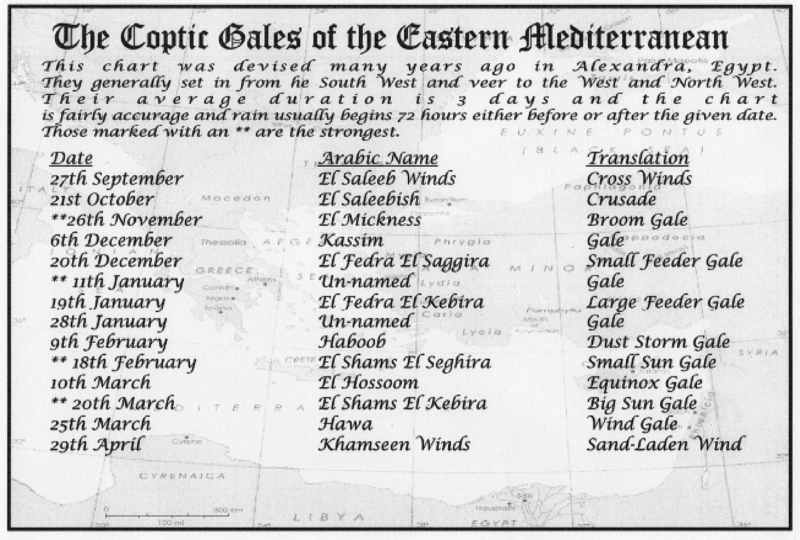The Eastern Mediterranean is a region of remarkable climatic diversity, influenced by its geographical position at the crossroads of Europe, Asia, and Africa. Among the seasonal weather patterns that shape this region is the phenomenon known as the “Coptic storms.” These are not mere meteorological events but a deeply rooted tradition in the region’s cultural and maritime history, named after the Copts of Egypt who meticulously recorded their seasonal occurrences.

What Are Coptic Storms?
Coptic storms are recurring, intense weather events characterized by strong winds, heavy rain, and turbulent seas. They occur between late autumn and early spring, aligning with specific dates on the ancient Coptic calendar. Mariners and coastal communities have long regarded these storms as predictable markers of seasonal change, using their timing to prepare for periods of rough weather.
The Origin of the Term
The term “Coptic storms” originates from the Coptic Orthodox Church, whose calendar is based on the ancient Egyptian solar calendar. This calendar divides the year into 12 months of 30 days each, plus an additional small month. Coptic monks and scribes meticulously observed and recorded natural phenomena, including storms, creating a long-standing tradition of associating these events with specific times of the year.
Characteristics of Coptic Storms
Coptic storms are particularly notable for their regularity and intensity. Each storm typically lasts two to four days and brings the following conditions:
- High Winds
Gale-force winds, often exceeding 50 km/h, whip through coastal areas and disrupt maritime activities. - Heavy Rainfall
Intense downpours accompany many Coptic storms, replenishing reservoirs and aquifers in an otherwise arid region. - Rough Seas
The storms generate large waves, making navigation dangerous for fishermen and sailors. - Temperature Drops
The storms often coincide with cold fronts, causing a sudden drop in temperatures, particularly in coastal and elevated areas.
Dates and Predictability
The predictability of Coptic storms has made them a valuable tool for planning in the region. The storms start around the Coptic New Year (September 11 on the Gregorian calendar) and continue through March. Each storm is named and associated with a specific period.
Historical and Cultural Significance
The Coptic storms have played a significant role in the cultural and economic life of the Eastern Mediterranean. Ancient mariners relied on knowledge of these storms to avoid perilous voyages, while farmers used the associated rains to plan planting cycles. The storms are also embedded in folklore, symbolizing the power of nature and the cyclical rhythms of life.
Modern Implications
While the predictability of Coptic storms has diminished somewhat with climate change, they remain an important feature of the Eastern Mediterranean’s weather patterns. Advances in meteorology have enhanced our understanding of these storms, allowing for more accurate forecasting. However, their impact on maritime and agricultural activities continues to be significant.
The Coptic storms of the Eastern Mediterranean are a fascinating blend of meteorology, history, and culture. They remind us of the profound ways in which human societies have adapted to and interpreted the forces of nature. Whether viewed as a scientific phenomenon or a cultural tradition, the Coptic storms stand as a testament to the enduring connection between people and their environment.










